Mining tycoon Lukas Lundin, chairman of the Lundin Group, spoke with The Northern Miner at the Prospectors & Developers Association of Canada convention in March about his early successes in Argentina and the Democratic Republic of the Congo (DRC), before touching upon his latest adventure in Ecuador.
Starting with the Bajo de la Alumbrera project in Catamarca, Argentina, Lundin says in 1990 he began investigating the classic copper-gold porphyry deposit, but was unfamiliar with porphyries at the time. “I was a bit naive. I didn’t know what a porphyry system was in the nineties. I thought it was a heap-leach gold project.
“It probably helped not to know too much, because if you knew too much, you’d probably think it was too far in the interior or too long to go to the coast … the majors thought it was too complicated.”
Despite these challenges, Alumbrera has become one of the world’s top-10 copper producers. It has churned out an average 150,000 tonnes copper and 498,000 oz. gold a year since production started in 1998. (Alumbrera is nearing the end of its 20-year mine life in 2018.)
Recalling the history of the project, Lundin notes that a professor at the Tucuman National University discovered the prospect in 1936. By 1958, the Tucuman University had formed YMAD — an exploration and development partnership with the province of Catamarca and the federal government. This happened after president Juan Peron, who wanted to nationalize resources, was ousted in 1955.
In the 1970s, John Guilbert, a geology professor from the University of Arizona, became interested in the porphyry copper potential at Alumbrera. From 1975 to 1982, Guilbert, as part of a United Nations Development program, oversaw YMAD’s exploration at Alumbrera. Guilbert led the efforts because he noticed the system “stuck out at surface,” Lundin says.
In 1989, Carlos Menem became Argentina’s president and improved the country’s investment policies. After a meeting with Guilbert in Arizona, Lundin was determined to buy the project after the professor said it was geologically “the best thing he’d ever seen.”
Lundin visited Argentina numerous times and started negotiating with YMAD, recalling that he was the only buyer, because most thought the project was too far from the coast.
But no one — not even Lundin at the time he bought the project in 1992 — realized Alumbrera had a high-grade pit grading 1% copper and 1 gram gold per tonne that would make it economical. “I found that later in the studies. But I guess we need a little bit of luck in this business,” he says.
After struggling to raise $1 million, Lundin’s International Musto completed a feasibility study in 1993 that concluded it would cost $600 million to build Alumbrera. The project would require a 316 km concentrate slurry pipe for dewatering. Once dewatered, the concentrate would be sent 830 km by rail to a port.
In 1994, Musto attracted major MIM as a joint-venture partner. The initial costs, however, jumped to $800 million, which caused tension between the partners on who should pay for the cost overrun. Lundin says he was “really upset,” but wanted to avoid a legal fight with MIM.
A year later, he sold the company’s 50% share to Rio Algom and North Ltd. for $510 million. The company’s initial investment had been $25 million. “So it was a lucrative business, and quite quick for the mining business.”
Alumbrera started production in 1998 at a capital cost of $1.2 billion. The current owners are Glencore (LON: GLEN) at 50%, Goldcorp (TSX: G; NYSE: GG) at 37.5% and Yamana Gold (TSX: YRI; NYSE: AUY) at 12.5%.
Alumbrera has generated 6 billion lb. copper and 9 million oz. gold. “It has been a nice success for everyone involved, even the original owners like me. I’m proud of this project and it was a really fun experience,” Lundin says.
Following Alumbrera, Lundin helped his father Adolf acquire the Tenke Fungurume copper-cobalt deposits in the DRC.
Tenke Fungurume is in the prolific Katanga copper belt. “It’s not a deposit — it’s a [1,400 sq. km] district with high-grade copper and cobalt,” he says.

An aerial view of the processing plant at the Tenke Fungurume project in 2015. Credit: Freeport-McMoRan.
The project, known and studied since the Belgian Congo days, saw a lot of exploration work, with initial drilling in 1919.
“This is a typical sedimentary-hosted copper deposit,” Lundin says, explaining it wasn’t mined earlier because of the oxidized mineralization.
“In the early days of the copper business, we didn’t know how to handle oxidized ore. What came in production from that belt were mostly sulphide deposits. That is why Tenke has never been exploited, and when Anglo American decided to tackle it, the country became unstable. ”
In the 1970s, an Anglo-led consortium built a concentrator to exploit the Tenke Fungurume deposits, but suspended their efforts in 1978, largely due to political instability. They returned the concessions to the DRC government.
In 1994, the Lundins started looking at the project and two years later signed a deal with state-owned miner Gecamines for 55% of Tenke Fungurume. The Lundins created Tenke Mining and raised $120 million to start a feasibility study in 1997. Shortly after, a civil war broke out. The company declared force majeure in 1999 and halted project work until 2005.
By 2005, the political conditions in the country had improved under President Joseph Kabila, and the DRC government formally approved the project’s development. Tenke Mining resumed the feasibility study with majority partner Phelps Dodge, who came onboard in 2002.
In 2007, Freeport-McMoRan (NYSE: FCX) acquired Phelps, and Tenke Mining merged with Lundin Mining (TSX: LUN).
Freeport and Lundin began pre-stripping in 2008. They put the multi-deposit project into production in 2009 for an initial cost of $1.9 billion.
“It took us from 1996 to 2009 to get it into production. It took us 13 years. But once we got there, we got it going well. So patience paid off over time,” Lundin says.
Now the operation is in its seventh year and producing 200,000 tonnes copper and 16,000 tonnes cobalt a year. It could reach 500,000 tonnes a year with sulphides.
However, Freeport ran into financial problems and sold its 56% interest in Tenke Fungurume to China Molybdenum for $2.7 billion last May. Lundin says he was uncomfortable working with the Chinese operator, and sold his company’s 24% interest to BHR Partners for $1.1 billion. (Gecamines owns 20% of the project.)
“This project … was a fantastic adventure for us. This mine is going to run for a long time.”
A new focus for Lundin is the high-grade Fruta del Norte gold project in Ecuador. “It’s very similar to what we did in Argentina. We came into the country two and a half years ago. Everybody was worried about the mining law in Ecuador … but the deposit was fantastic.”
In late 2014, Lundin Gold (TSX: LUG) picked up the project from Kinross Gold (TSX: K; NYSE: KGC) for $240 million in cash and shares. An April 2016 feasibility study concluded Fruta del Norte could produce 4.4 million oz. gold and 5.2 million oz. silver over a 13-year mine life. Estimated start-up costs are $669 million.

The camp at Lundin Gold’s Fruta del Norte gold project in Ecuador. Credit: Lundin Gold.
Last December, Lundin Gold signed an investment protection agreement and an exploitation agreement for the project.
Construction at Fruta del Norte should begin this year, with production starting in 2020.
“It has been very, very exciting. The conclusion is patience and perseverance, and if you have a good asset, you will always accomplish something. It is tonne and grade — and everybody knows that.”

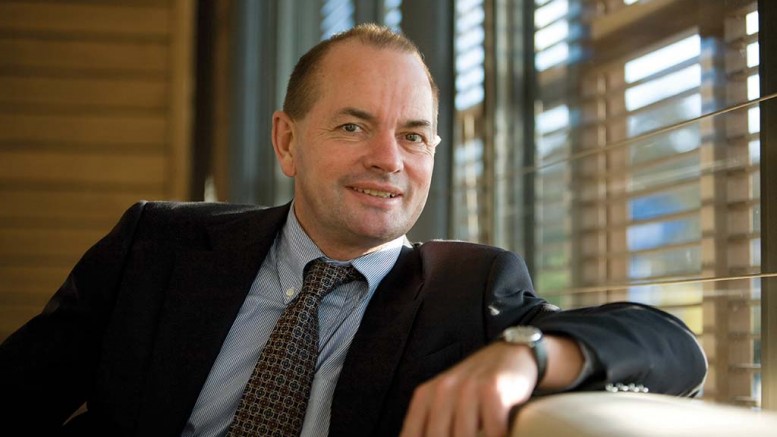
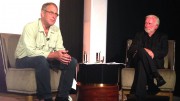
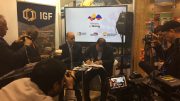
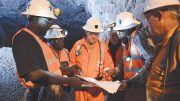
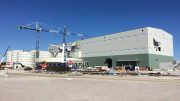
Be the first to comment on "PDAC 2017: Lukas Lundin on patience and his early successes"